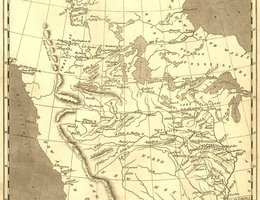

For centuries before 1800, Native tribal groups had inhabited the land of the Great Plains and the West. In that sense, they "owned" it. Between 1650 and 1800, a series of European governments — Spain, Britain, France and Russia — all sent explorers into parts of the West and "claimed" to own the land.
But in 1802, ownership of a large part of the West changed, and changed fundamentally. France sold 828,000 square miles of land west of the Mississippi River to the United States. That worked out to 4 cents per acre — a bargain even then. The lands stretched from the Mississippi River to the Rocky Mountains and from the Gulf of Mexico to the Canadian border. Thirteen states were carved from the Louisiana Territory. The Louisiana Purchase nearly doubled the size of the United States, making it one of the largest nations in the world.
France’s Emperor Napoleon Bonaparte decided to sell it to the United States to help finance his foreign wars. Also, he feared the United States would eventually take control of the area anyway, and France would receive no compensation.
See the actual first page and transcript of the whole treaty.
Even before the purchase was complete, President Thomas Jefferson sent a confidential letter to Congress asking for money to send explorers up the Missouri River and on to the Pacific Ocean. He wanted to know if there was a way to cross the new territory by following rivers and streams. He also wanted to support the new trade in animal furs for American hunters and trappers.
The explorers Jefferson chose to lead the "Voyage of Discovery" were Meriwether Lewis and William Clark. Read the transcript of Jefferson’s orders to Lewis. Lewis and Clark’s reports captured the attention and imaginations of people across America and led the way for an entire generation of explorers, fur traders, missionaries, soldiers, immigrants, prospectors and settlers.
Transcript of Jefferson's orders to Lewis
Even though Native American people were already here, Lewis and Clark "opened up" the territory for European settlement. Some of the routes they chose to cross this new territory are still being used today for railroads, barge lines, interstate highways and even the Internet.